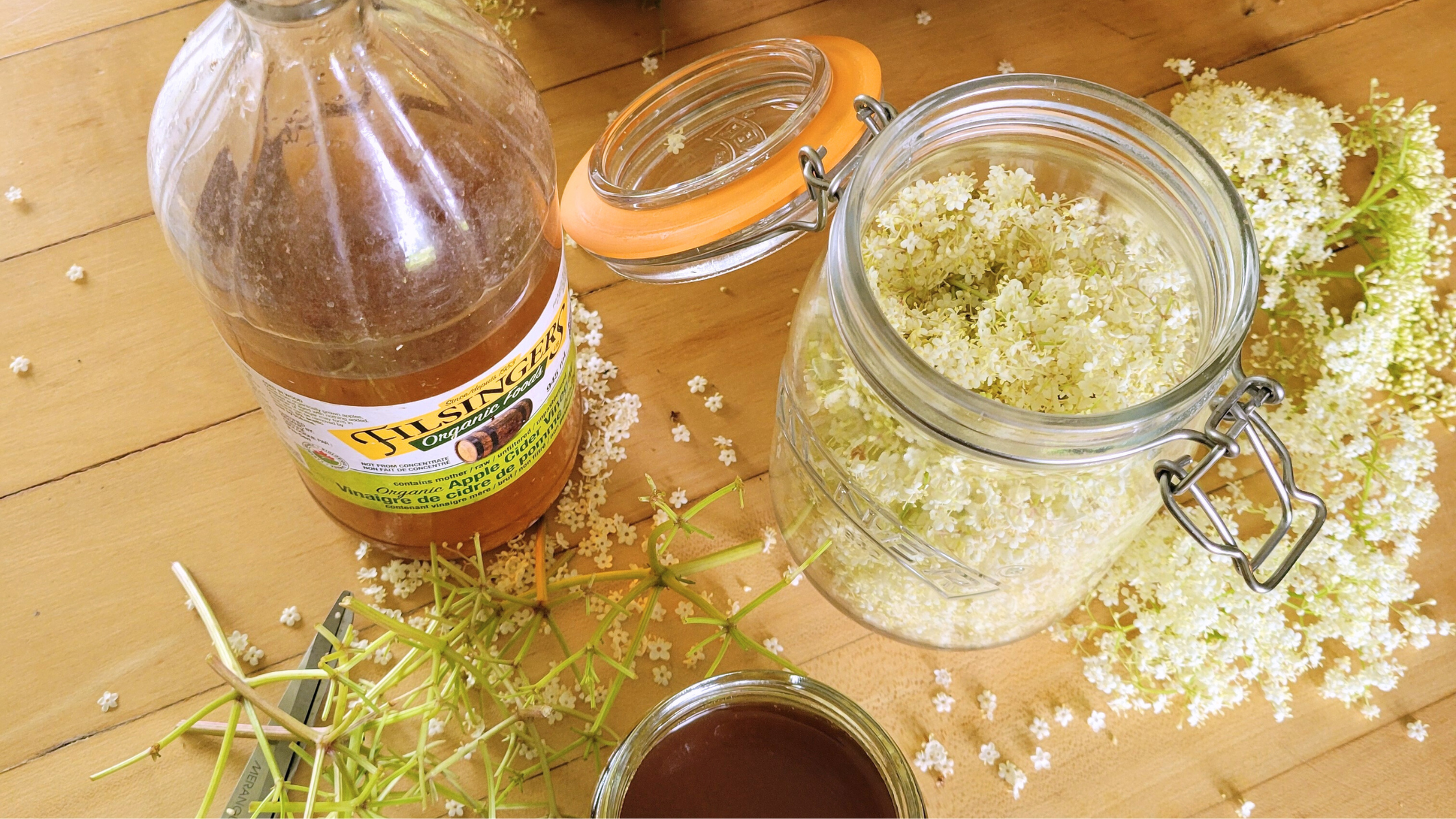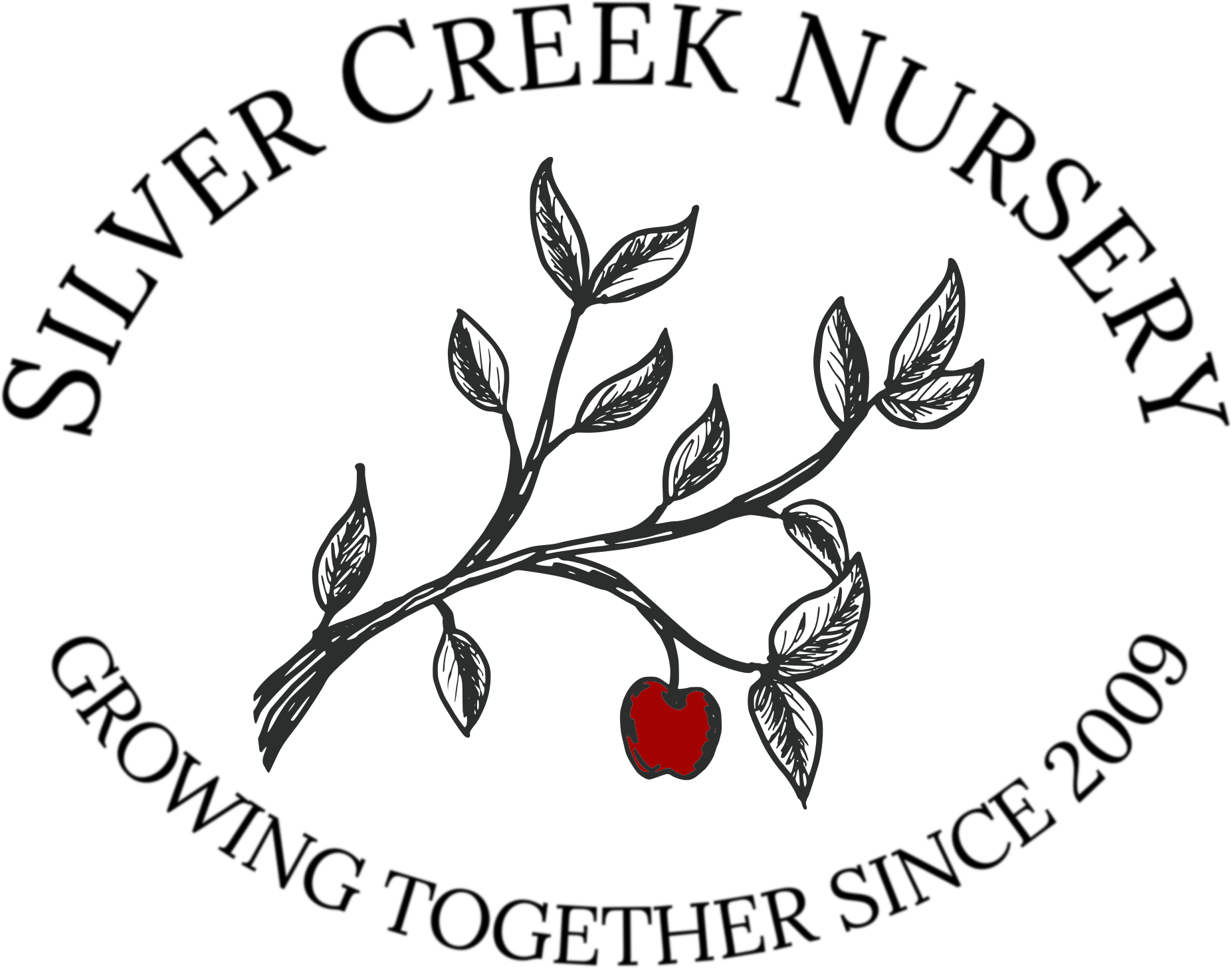
Elderflower Oxymel
Authored by Jodi Roth
Making an elderflower oxymel is a great way to preserve the flavours and healthful qualities of elderflower blossoms for use out of season. An oxymel is a mixture of a botanical flowers or green parts (depending what botanical you are using) with apple cider vinegar and honey, which both have preservative effects after the infusion of your chosen botanical element is completed. In this case, we are talking about elderflowers, apple cider vinegar, and honey.
An oxymel can be used in salad dressings, mocktails or cocktails, or taken on its own by spoonful for its health benefits (you can research those on your own). You can also use it creatively anywhere you would normally use vinegar in your food creations - if you think it might work, don't be afraid to try it out!
To make a small batch of elderflower oxymel, you'll want to collect enough elderflower umbels to make approximately 2-3 cups worth of flowers. As mentioned in my Elderflower Fritter & Tempura blog post, these should be checked for bugs and if foraging, you'll want to ensure the area is free from environmental pollutants.

The recipe below will make around 1 to 1.5 quart-sized mason jars - I used an off-sized flip top jar so I'm guestimating, but if you need to fit everything into one jar just adjust the ingredients slightly, erring on the side of more vinegar and flowers since you can adjust the honey later on if you want.
- 2-3 cups elderflowers
- 2 cups apple cider vinegar
- 1 cup raw honey (less if you prefer a more sour flavour)
As you can see in the photo here, I used a eucalyptus honey from Tasmania. It was actually quite a strong flavour on it's own and ended up heavily influencing the flavour of the oxymel, so if you prefer to have the elderflowers be a more forward flavour, I would recommend using a local Ontario raw honey. Looking for an Ontario No. 1 White honey or honeys called Summer Blossom or Clover Blossom will have mild flavours that will allow the elderflowers to shine. Since I keep my own bees, I generally use my own honey for oxymels, but I happened to have some of the eucalyptus honey on hand and wanted to try it out! My little bee business is Huckleberry Hives, located in Gadshill. The other source I'd recommend for raw honey is my brother's bee business, Nith Valley Apiaries in New Hamburg which is where I learned all about honey bees to begin with!
For this recipe, since you aren't battering the umbels like you are for the fritters, you can separate the flowers right off of the umbel stems into your jar. I did leave some of the smallest stems simply because it was less tedious and makes no difference to have some small stems present. The jar should be at least half full, and can be almost full of flowers if desired.

Pour over your honey and then fill the rest of the jar with apple cider vinegar and add your lid.
Allow the oxymel to infuse for about a month in a cool dark cupboard. I like to check mine and swirl/stir daily for a few days to a week until the elderflowers started to settle down into the mixture since they want to float for the first little bit of the infusion and that results in the top layer oxidizing more when left un-stirred.
Once the oxymel has infused for 4 weeks, strain it through a cheesecloth and discard the plant matter. If desired (and if the bloom season is still on) you can make a more potent infusion by adding new fresh elderflowers into the oxymel and doing a secondary infusion, but note that you may also want to add some extra vinegar and honey to balance out the added flower liquid and ensure shelf stability.
Store your completed oxymel in a clean glass jar and enjoy on its own or in dressings, cocktails, mocktails and whatever else your heart desires!
Happy foraging, harvesting, growing and making!
~Jodi
Share
